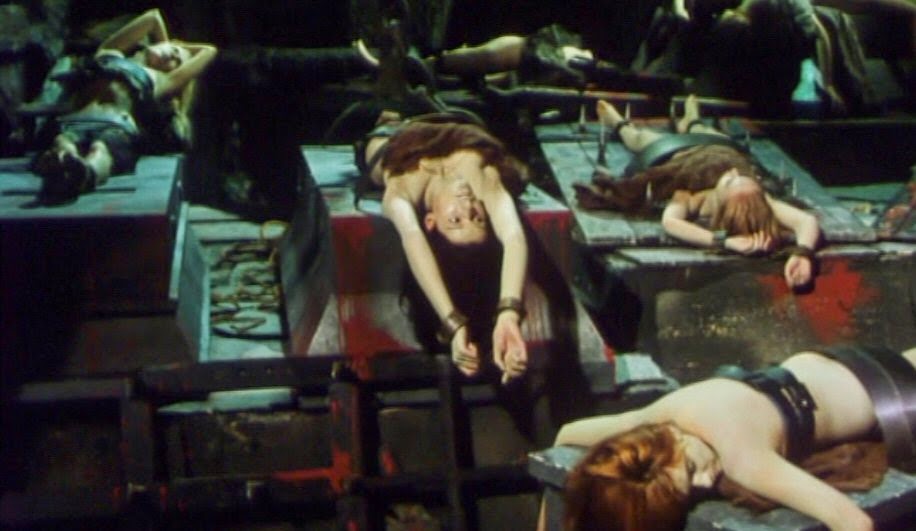
Die Schlangengrube und das Pendel (1967) is a classic Gothic horror film from The Constantin Film AG of Germany (then West Germany). Die Schlangengrube und das Pendel reunited Constantin stalwarts Harald Reinl, Karin Dor, and Lex Barker who had worked together previously on two hit films in the Winnetou series. Although director Reinl and stars Barker and Dor specialized in romantic adventure films, Die Schlangengrube und das Pendel proves that they were just as adept at campy Edgar Allan Poe adaptations as Roger Corman (whose own films in that vein inspired Die Schlangengrube und das Pendel).
Die Schlangengrube und das Pendel is a loose adaptation of Poe’s short story The Pit & The Pendulum that foregrounds action rather than suspense. For the first forty minutes or so of Die Schlangengrube und das Pendel, when Reinl is shooting exteriors, the film feels very much a piece of Der Schatz im Silbersee. It isn’t until the heroes enter the ruins of Count Regula’s (Christopher Lee) castle that the film takes on a more Gothic visual palette.
The ruins and underground lairs that remain of the Regula castle defy all spacial logic, recalling the spacial anomalies of Terence Fisher’s Horror Of Dracula (1958). In the realm of evil a sort of dream logic presides over space and architecture that suggests the macabre post-WWI tones of German Expressionism. The walls of Castle Regula are adorned with paintings reminiscent of Max Beckmann which mirrors the production design of the sets populated with dismembered limbs.
The overall production design of the second half of Die Schlangengrube und das Pendel appropriates the low-budget Gothic style of Corman and Hammer Films then imbues it with a distinctly German aesthetic. This is also true of how these grotesque sets are lit. Again and again, from within the inkiest shadows tableaus of mutilation and torture are revealed, often taking on an obviously artificial quality. The arms and legs of the dead are represented by mannequins and statues that further evoke the plastic psychological terrors of German Expressionism.
Of this ilk there are two distinctly memorable set pieces in Die Schlangengrube und das Pendel. The first occurs as the characters first enter the estate of Regula which has become a literal forest of gallows. This is the only exterior location in the film shot on a soundstage which enabled Reinl to exert absolute control over his images. The result is something akin to Abel Gance’s J’accuse (1919) rendered in purple hues with Universal monster style lightning effects. The second set piece of note is the torture chamber where twelve nude virgins lay strewn across implements of medieval torture.
The torture chamber is a still set that is seen by the characters and viewers but never interacted with. It’s constant, unchanging composition lends it a photographic quality that begs comparisons to gut wrenching photographs of the Holocaust. It is a set whose image on film re-imagines the aforementioned Beckmann-esque mural as a work that is tangible, that is of the flesh.
The evil of Count Regula exists much more in setting and the images of that setting than it does within the actions of the character himself. Regula is little more than an iteration of a vampire who single mindedly pursues his vengeance. Regula could be the villain in any Gothic horror B-movie. What is incredible and unique about Die Schlangengrube und das Pendel is the discourse it necessitates between images associated with the atrocities of both World Wars and the implication that such evils are born out of individual moral corruption.
